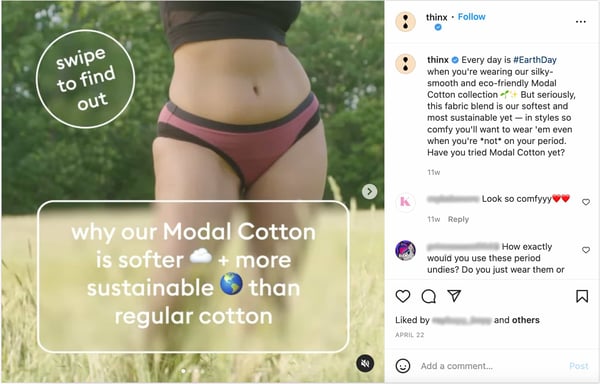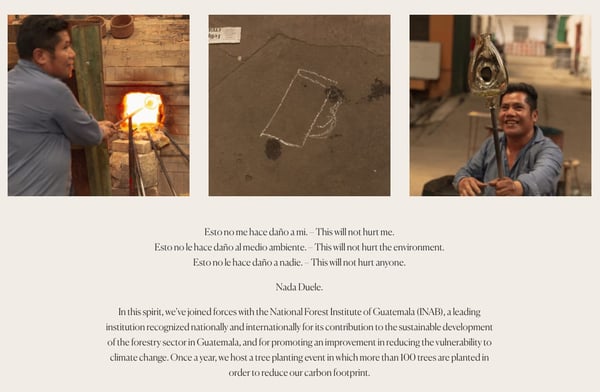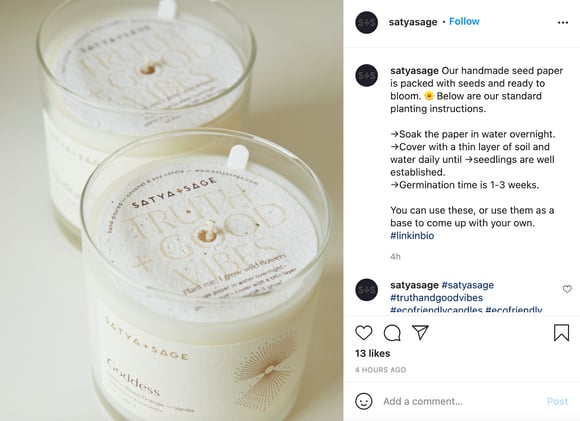Sustainable Marketing: Key Principles & How to Leverage It [+Examples]
In 2020, IBM ran a study on consumer behavior and found that most consumers are willing to change their shopping habits to be more environmentally conscious. This is likely why consumers have noticed a big push for sustainable marketing...
![Sustainable Marketing: Key Principles & How to Leverage It [+Examples]](https://blog.hubspot.com/hubfs/sustainable%20marketing.jpg#keepProtocol)
In 2020, IBM ran a study on consumer behavior and found that most consumers are willing to change their shopping habits to be more environmentally conscious. This is likely why consumers have noticed a big push for sustainable marketing from brands. Fast forward to 2022 and not much has changed. So, how does a brand leverage sustainable marketing to appeal to a growing, socially conscious audience? We’ll cover that and more below. Sustainable marketing is the promotion of socially responsible products, services, and practices. While eco-friendly brands naturally work on sustainable marketing campaigns, brands that are not rooted in sustainability can still apply its principles to their strategy. Its goal is to promote a mission, not a product or service. While both terms are often used interchangeably, there is a difference between green marketing and sustainability marketing. Green marketing focuses on strategies that promote environmental awareness and protection. Sustainable marketing, on the other hand, is a little broader. It encompasses green marketing but it also includes practices that go beyond the environment, like social and economic issues. Sustainability is a topic that has gained a lot of traction as of late. Many believe it only matters to Gen-Z but recent research suggests this is a cross-generational concern. In 2022, we surveyed 1,034 consumers to learn about their shopping habits. Half of the respondents believe climate change is one of the most important social issues companies should take a stance on – with the highest response from Boomers (ages 55+) and Gen-X (ages 35 to 54). This value is reflected in consumers' purchasing decisions. Nearly half (46%) of respondents say they’re more likely to buy from a company actively trying to reduce its environmental impact. In addition, roughly 28 percent of respondents say a brand’s environmental impact and the ethical production of its products are two of the most important factors influencing their purchasing decisions. According to the data, Millennials (38%) care most the ethical products while Gen-X cares the most about the environmental impact. However, all groups show consideration for sustainable practices. So, to answer the question posed at the beginning of this question: Yes, consumers do care about sustainability and it’s not just the youngsters. So, even if your brand isn’t rooted in this mission, you will still find value in investing time and resources in sustainable practices and marketing to attract more customers. Learn more about consumers in our 2022 State of Consumer Report. Brands typically judge their success by the numbers. How much revenue they have or will generate in any given period is usually the biggest indicator of success. Sustainability shifts this perspective by having brands evaluate themselves by something bigger than profit. As a brand, you have to promote something that’s bigger than your products and services and transcends any particular industry. Do you have a clear social mission? If not, spend time discovering what that is and how your brand plays a role in furthering that mission. For instance, fashion brand Autumn Adeigbo sells clothing, accessories, and home decor items. However, its mission, as stated on its website, is to impact the lives of women on a global scale. They do so by using female-owned production facilities and employing female artisans, among other practices. Sustainability marketing is all about building long-term value. Too often, brands focus on gaining immediate returns. For instance, many marketing tactics like running Google Ads and blogging are great lead generators. However, what happens once your lead has made a purchase and turned into a customer? How will you build loyalty and create brand evangelists? Sustainable marketing looks at ways to nurture consumers during the entire buyer’s journey. Education is one way to build loyalty with your audience early on. From when they first discover you on social media to after they’ve made a purpose. For instance, a food brand could educate its audience on the importance of ethical farming on social media and continue this process post-purchase with package recycling tips. You might be thinking, “Isn’t being consumer-oriented what all marketing is?” Ideally, yes but that’s not always the case. In traditional marketing, a brand will often try to push a product or service to a customer. With consumer-oriented marketing, it’s more about understanding your customers’ needs and tailoring your marketing to that. For instance, say your audience is craving more transparency in your sourcing practices or wants you to be more vocal on social issues. You could use that information for your next campaign. With so much competition out there, one way to stay customer-oriented is by innovating. We’ve all heard the Blockbuster and Netflix cautionary tale. But that speaks to a huge societal shift that Blockbuster was unwilling to make. But the truth is, innovation doesn’t always have to be so big. It can happen in small iterations – the key here is staying in touch with your audience’s needs. Sustainability marketing doesn’t work if it’s not authentic. Imagine finding out a business that claims to be sustainable has failed to implement any practices to promote its mission. Consumers would distrust that brand and it would be difficult to earn it back. Make sure your brand is looking at sustainability from a holistic lens. Are you preaching about sustainability but using unsustainable resources to build your product? Are you collaborating with brands that conflict with your mission? Is your team representative of the future you want to promote? These are the questions you should ask to determine if your brand reflects the mission you’ve set out to achieve. Identify the areas that need work and go to the drawing board to figure out strategies that align with your mission. Audiences don’t expect perfection, they do, however, value transparency. It’s OK – and recommended – to share where you currently fall short and how you plan to remedy these issues. Thinx is an underwear brand whose mission is to provide sustainable solutions to menstruation and incontinence. Everything the brand puts out marketing-wise is centered around this core value. The brand’s social media pages feature a mix of product promotion, educational content, and mission-focused announcements. The key to sustainable marketing is doing it in an authentic way that feels embedded in the brand, as opposed to an add-on that’s leveraged when convenient. Thinx is a great example of how to do it right. This clothing company was started based on the founder’s desire to find a socks company with a sustainable and ethical vision. While most brands focus on inviting its consumers to purchase, Kind Socks takes the exact opposite approach: Asking them to spend less and more thoughtfully. This strategy may seem counterintuitive to many companies but emphasizing the brand’s mission can help build trust with its audience and increase their brand loyalty. Materials science company, Pangiai, wants to save the environment. Every piece of marketing the brand puts out is centered around this core mission, including this video campaign. In it, the brand explains its mission to “reverse the cycle from the unnatural to natural, from plastic to plants […], from the new to the recycled.” What’s effective about this ad is that Pangiai describes the future they want to see and outlines the strategies it will implement to get there. Throughout the ad, you see Pangiai products but they’re not the focus. This tells viewers the mission drives the products, not the other way around -- and that’s sustainable marketing done right. In the previous section, we discussed the importance of having a holistic approach to sustainability marketing. With Nada Duele, their mission is reflected in everything: from their name, which represents the idea that products should not cause harm, to the initiatives they take part in. When you visit their “How We Work” section, you learn about their collaboration with a Guatemalan institute dedicated to protecting the forestry sector. It’s important that the partnerships your brand takes on align with your values. Otherwise, you risk losing credibility and trust. Social media is one of the best and easiest ways to implement a sustainable marketing strategy. You can share a range of content, from educating your followers on sustainable practices to sharing ways your brand is being sustainable. In this example from candle company Satya + Sage, they share tips on how to use the seed paper that comes with every candle. On social media, in particular, pay attention to the questions your followers ask and the comments they make, as that can inform which marketing strategies you test in the future. Sustainable marketing is becoming increasingly important for brands. Editor's Note: This post was originally published in Oct. 2021 and has been updated for comprehensiveness.What is sustainable marketing?
Green Marketing vs. Sustainable Marketing
Are Potential Customers Paying Attention to Sustainability? [Data]
Sustainable Marketing Strategies
1. Have a larger purpose.

2. Think ahead.
3. Be customer-oriented.
4. Reflect sustainability in every aspect of your brand
Sustainable Marketing Examples
1. Thinx

2. Kind Socks
3. Pangiai
4. Nada Duele

5. Satya + Sage

Originally published Aug 12, 2022 7:00:00 AM, updated August 12 2022

 Hollif
Hollif 

































